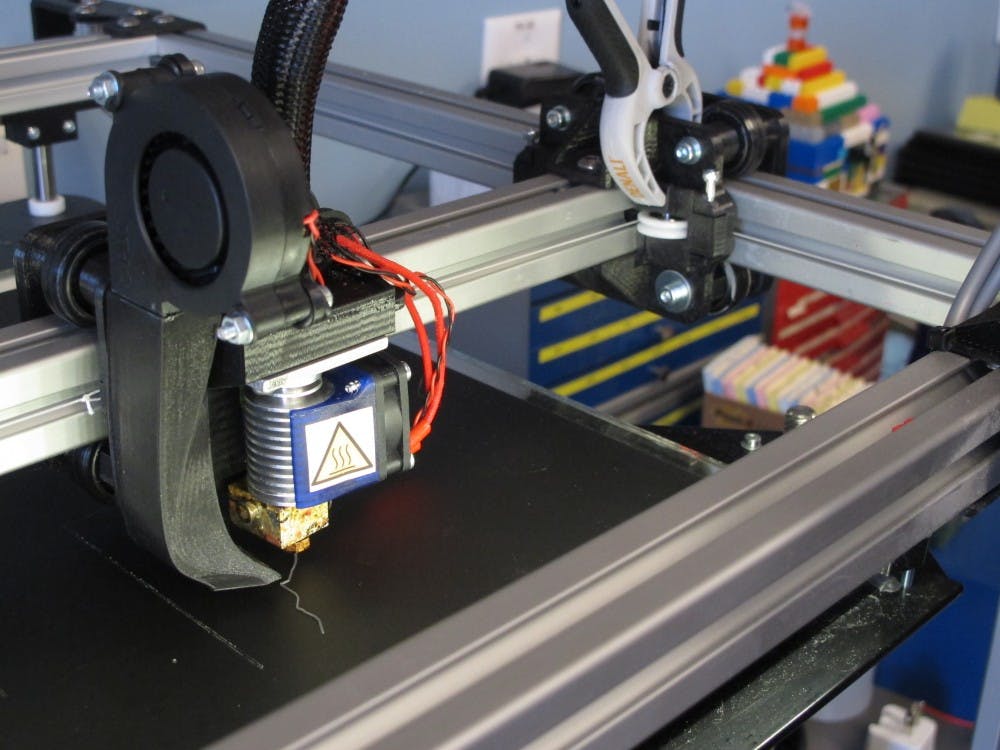Sophomore Business Fellow Kristen Lober uses her Windows laptop not only for specific business software, but also to watch Netflix, check Facebook and shop online.
“My computer is always in my backpack, and I pretty much always have my phone in my hand,” Lober said.
Whether it’s in the library, in the student center, in the classroom or at home, students’ eyes are almost always glued to the screens of their personal technology devices. It’s a relationship that’s becoming increasingly important to Elon University.
In the past, students typically brought no more than one Internet-connected device with them to school, but now that number can be closer to three or four different devices: everything from laptops, phones, tablets, televisions and some gaming consoles that have Wi-Fi Internet capabilities. These devices use up a huge portion of the university server’s bandwidth, making the monitoring of technology trends an increasing priority. Schoold like Elon are reevaluating their efforts to accommodate all students and all devices.
Michael Vaughn is an instructional technologist at Elon. He works with the Teaching and Learning Technologies (TLT) department, a department with the goal of working with faculty, staff and students to use technology in meaningful and effective ways.
“In my position, I want to see technology used to its full potential,” Vaughn said.
In general, though, he sees students using their computers to do three things: surf the web, use Microsoft Office and collaborate with other students using Google Drive.
“I do a lot of group projects online,” Lober said. “Having my own computer is probably best for doing that. I also take most of my notes on my computer. I can type a lot faster than I can write, so I like doing that more than I like writing my notes.”
Planning for new realities
Vaughn and his department are looking beyond the use of laptops in class. BYOD stands for “Bring Your Own Device” and is the idea that faculty and students can work on the device they choose: a phone, laptop, tablet or other Internet-connected technology. It is the evolution of both classroom and workplace technologies, and the university is looking at taking an educational approach to making the best use of these new devices in the classroom.
“We’re working hard to have bandwidth of a future while also remaining realistic,” Vaughn said.
He stresses that the use of personal technology in the classroom setting is not always necessary or beneficial to the lesson. Vaughn describes finding the right level of interaction to be a fascinating balance, and said that BYOD is more of an eventuality than a question at this point.
“Considering the vast majority of students bring a laptop to campus,” Vaughn said. “I think it’s likely we see this happening in the next five years or so.”
Access to tech
Accommodating students who have any type of Wi-Fi, capable device is a new reality for Vaughn and the entire technology department, but there are resources in place for those students who don’t have access to a personal device.
The university closely monitors the use of their on-campus resources for students who may not have the same access to quality devices and computer equipment.
Last year, in partnership with Media Services, the Center for Access and Success began a new initiative to grant students who may not have their own personal computer access to one. The office was given a number of portable laptop computers that are available for long-term loan.
Students are able to have the computer for as long as they need, though they must sign it out from Janelle Rouse, director of Collegiate Start and collegiate mentoring. Rouse said that the laptops are part of an engagement program for some students who qualify as “need-based” or in “high financial need.”
“It’s a way to support those students and certainly is a valuable program. As the program grows, I think we will see more people using them,” Rouse said.
Media Services also provides students access to 15 PC computers and two Mac laptops available for short-term checkout.
Christopher Waters, assistant vice president for technology and chief information officer said the university is aware and paying attention to the trends in on-campus technology use. Through extensive surveys and analysis, the technology department is able to keep statistics related to how students are taking advantage of these resources.
“We’re aware and paying attention,” Waters said. “We definitely still see people checking things out on a daily basis.”
But a scene that is becoming more and more common in the library and other open technology spaces on campus is students sitting in front of university desktop computers but working on their personal computers instead. In this scenario, students are not using the university technology, and are also taking away the opportunity for another student to use it, Vaughn said.
Because of this, moving away from traditional computer labs may happen in the near future. This summer the university replaced one of the highest numbers of computers during its refresh cycle, which happens every four years. Obtaining and installing the new devices not only took the majority of the summer, but was costly as well.
As BYOD becomes more of a reality, these costs may be allocated toward ideas like expanding the bandwidth.


